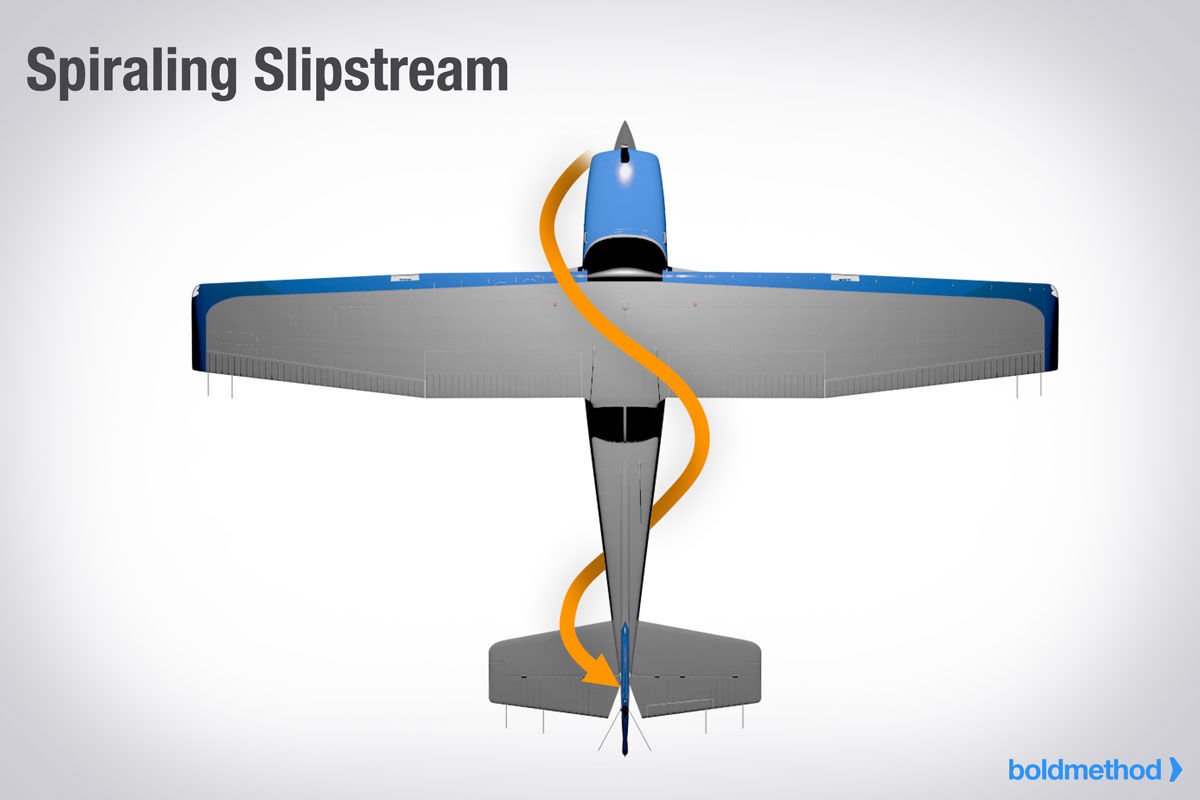|
The effects of the movement of air upon the aircraft, too, are important. It is true that the propeller forces air back to produce thrust, but that air isn't moving perfectly linearly. That air, thanks to the spinning propeller, is spinning itself! This air will continue to spin as it moves down the fuselage of the aircraft, eventually making contact with the vertical stabilizer of the aircraft. This will, as expected, attempt to push the tail of the aircraft to the right - inducing a left yaw.
In a very similar vein to P-factor, this effect is most pronounced at low airspeeds, where the spiraling air is allowed to 'bunch up' - much like the frequency in waves, this will cause a greater yawing action. Additionally, at lower airspeeds, the effect of the rudder is diminished, only strengthening the effect and increasing the necessity of applying the rudder to the right. |
Spiraling Slipstream.
https://cdn.boldmethod.com/images/learn-to-fly/aerodynamics/why-you-need-right-rudder-on-takeoff/spiraling-slipstream-aircraft.jpg |
Create a free web site with Weebly
